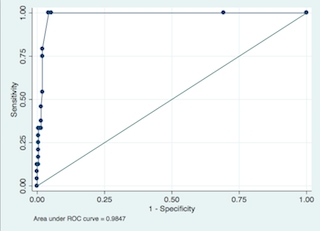
Contributions
Abstract: PB1806
Type: Publication Only
Background
Aims
Methods
We retrospectively reviewed 299 BCR-ABL PCR requests received at our laboratory between January 1, 2015 and January 1, 2017. 80% of the total requests were ordered by haematologists physicians, 13.46 % by other medical specialities (11.5% internal medicine) and 7.7% from the laboratory. Complete blood cell count (CBC) were analysed by ADVIA 2120. Neutrophilia was defined in our laboratory as absolute neutrophil count of >7.7x10 9/L, and basophilia was defined as absolute basophil count of > 0.2 x10 9/L. A total of 299 requests for PCR of BCR-ABL were reviewed by laboratory hematology staff, before performing them, according to 2008 WHO Classification of Hematologic neoplasms criteria. We reviewed clinical history, previous CBC and PBM if necessary for this screening. We performed 235 test (78.6%) and 64(21.4%) were considered inadequate according former criteria. qRT-PCR p210 was performed and if a negative result was obtained with high CML suspicion qRT-PCRp190 and qRT-PCRp230, such as cytogenetic studies were performed.The statistical analysis was performed with STATA.
Results

Conclusion
Session topic: 7. Chronic myeloid leukemia - Biology
Keyword(s): Myeloproliferative disorder, Chronic myeloid leukemia, BCR-ABL
Abstract: PB1806
Type: Publication Only
Background
Aims
Methods
We retrospectively reviewed 299 BCR-ABL PCR requests received at our laboratory between January 1, 2015 and January 1, 2017. 80% of the total requests were ordered by haematologists physicians, 13.46 % by other medical specialities (11.5% internal medicine) and 7.7% from the laboratory. Complete blood cell count (CBC) were analysed by ADVIA 2120. Neutrophilia was defined in our laboratory as absolute neutrophil count of >7.7x10 9/L, and basophilia was defined as absolute basophil count of > 0.2 x10 9/L. A total of 299 requests for PCR of BCR-ABL were reviewed by laboratory hematology staff, before performing them, according to 2008 WHO Classification of Hematologic neoplasms criteria. We reviewed clinical history, previous CBC and PBM if necessary for this screening. We performed 235 test (78.6%) and 64(21.4%) were considered inadequate according former criteria. qRT-PCR p210 was performed and if a negative result was obtained with high CML suspicion qRT-PCRp190 and qRT-PCRp230, such as cytogenetic studies were performed.The statistical analysis was performed with STATA.
Results

Conclusion
Session topic: 7. Chronic myeloid leukemia - Biology
Keyword(s): Myeloproliferative disorder, Chronic myeloid leukemia, BCR-ABL


